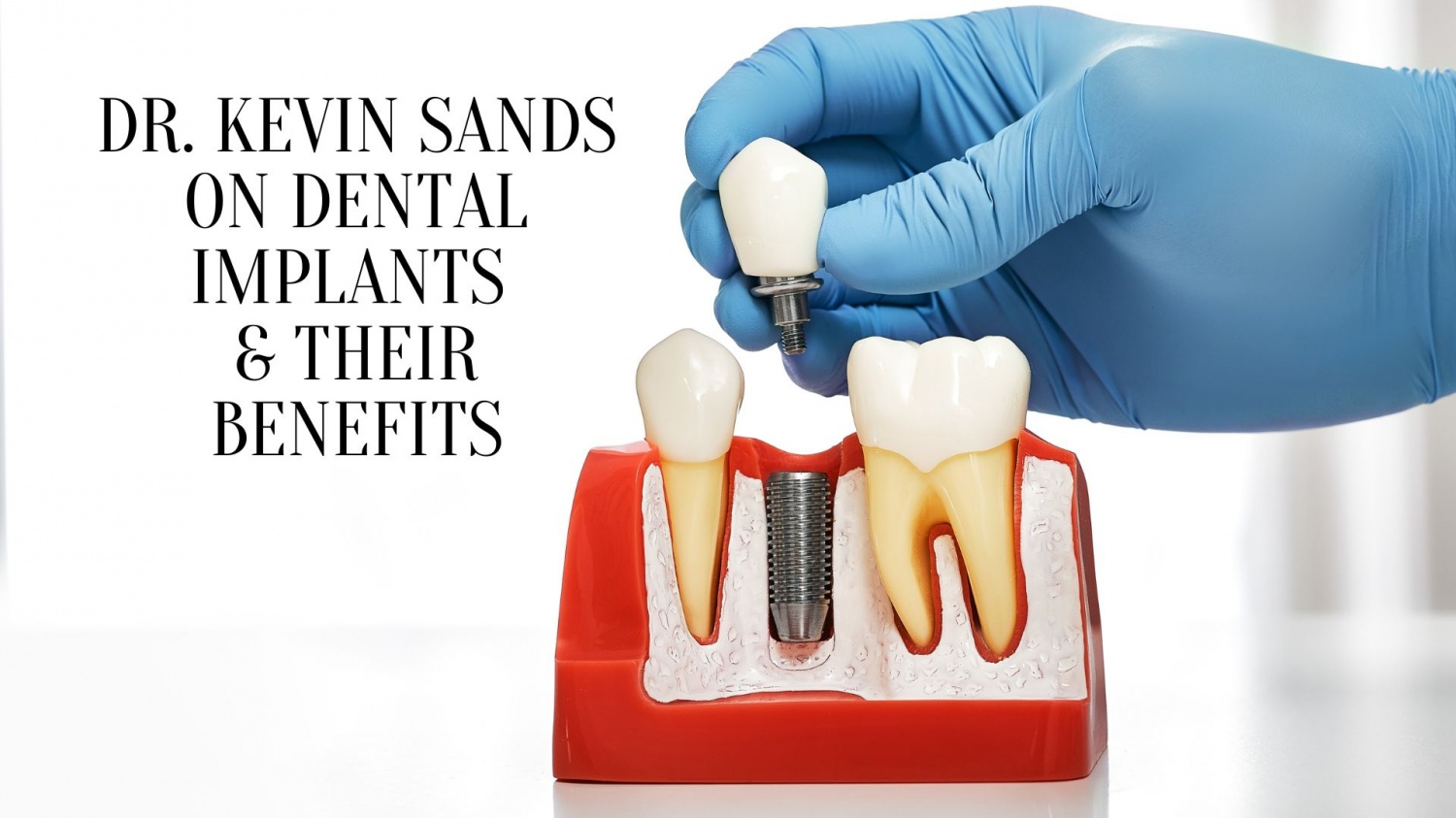Dr. Kevin Sands on Dental Implants & Their Benefits

By providing patients with a durable, natural solution for missing teeth, dental implants have revolutionized the field of cosmetic dentistry. Whether you've lost a tooth after an injury, decay, or any other kind of dental issue, dental implants offer a long-term replacement option, with benefits that go well beyond oral health.
"A successful cosmetic treatment can not only enhance the appearance of the smile, but improve overall quality of life, as well," said Dr. Sands.
But what exactly are dental implants? And what should one expect from the process of having dental implants done? In this article, we're shedding light on dental implants, the benefits, and the procedure.
Understanding Dental Implants
Dental implants are artificial tooth roots that are surgically implanted into the jawbone to support replacement teeth or dental prosthetics. Typically made of biocompatible materials such as titanium, materials in dental implants have the ability to fuse with the surrounding bone over time-this process is known as osseointegration, and it creates a strong and stable foundation for replacement teeth. This way, dental implants are ensured to function and look just like natural teeth.
The Benefits of Dental Implants
According to Dr. Sands, the advantages of dental implants are remarkable, and it's no wonder why they're a preferred choice for tooth restoration. Here are some key benefits of getting dental implants:
Improved Confidence
Dental implants closely resemble natural teeth, providing a seamless and attractive smile. They blend seamlessly with the surrounding teeth, creating a natural appearance that can have a serious boost on self-confidence.
Enhanced Functionality
Unlike dentures, which can slip or cause discomfort while eating or speaking, dental implants function like natural teeth. With implants, individuals can enjoy their favorite foods without restrictions and speak with ease, knowing that their teeth are secure.
Long-Term Durability
Dental implants are designed to work as a permanent solution for tooth loss. With proper care and maintenance, they can last a lifetime, sparing patients from the hassle and expense of frequent replacements associated with other solutions.
The Dental Implant Procedure
Dental implants have revolutionized the field of dentistry by providing patients with a long-lasting, effective solution for replacing missing teeth. In this section of the article, we're delving into the dental implant procedure, outlining the steps involved.
Initial Consultation
The journey toward a dental implant begins with an initial consultation with a qualified dentist such as Dr. Sands. During this appointment, the dentist will conduct a thorough examination of the patient's oral health, which will likely entail assessing the condition of the jawbone and gums. They will also review the patient's medical history and discuss any concerns or expectations. This consultation is crucial for determining the suitability of the patient for dental implants, and allows the dentist to develop a personalized treatment plan.
Treatment Planning
Following the initial consultation, the dentist will create a detailed treatment plan tailored to the patient's specific needs. This entails the consideration of many different factors, including the number of missing teeth, the condition of the jawbone, and the patient's overall oral health. Advanced imaging techniques such as X-rays or CT scans may be used to gather precise information about the jawbone structure and the optimal placement of the dental implants.
Dental Implant Placement
The actual dental implant placement is a surgical procedure typically performed under local anesthesia. In some cases, sedation or general anesthesia may be used, depending on the patient's preference and the complexity of the procedure.
During the surgery, the dentist performing the implant procedure will create an incision in the gum tissue to expose the jawbone. Then, with the help of specialized tools, they will carefully drill a small hole in the jawbone, placing a titanium implant fixture securely within it. After the implant fixture is placed, the gum tissue is sutured back together, and the healing period begins.
Osseointegration
Once the dental implant fixture is in place, a process called osseointegration begins. This process usually takes several weeks to a few months until the implant fully integrates with the jawbone, ensuring a durable and reliable support system for the artificial tooth (or teeth).
Abutment Placement
Once osseointegration is complete, a small connector called an abutment is attached to the implant. The abutment acts as a link between the implant and the prosthetic tooth or crown. To place the abutment, the dentist will reopen the gum tissue to expose the implant for attachment. Typically, this is a relatively minor procedure and can be performed under local anesthesia.
Prosthetic Placement
After the abutment is placed, the dentist will take impressions of the patient's mouth to create a custom-made prosthetic tooth or crown. Once the dental lab completes the fabrication of the prosthetic piece, it is attached to the abutment, creating the dental implant procedure.
Follow-Up Care
Regular follow-up appointments with your dentist are essential to monitoring the healing process, ensuring the long-term success of the dental implant. During follow-up appointment, the dentist will assess the stability of the implant, check the prosthetic fit and function, and address any concerns that the patient may have. Proper oral hygiene, including brushing, flossing, and regular dental check-ups, is crucial to maintaining the health and longevity of the dental implant.
* This is a contributed article and this content does not necessarily represent the views of enstarz.com





